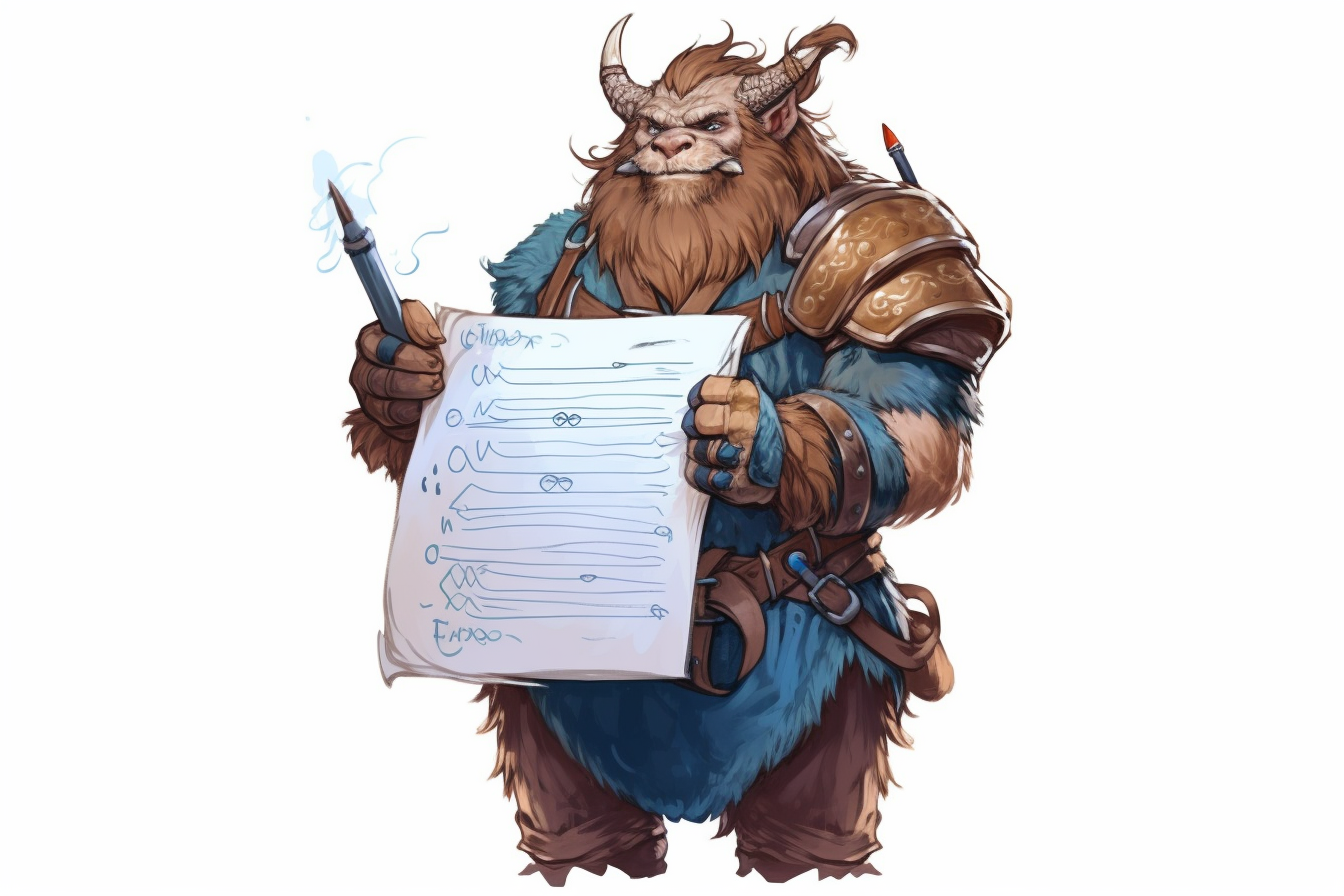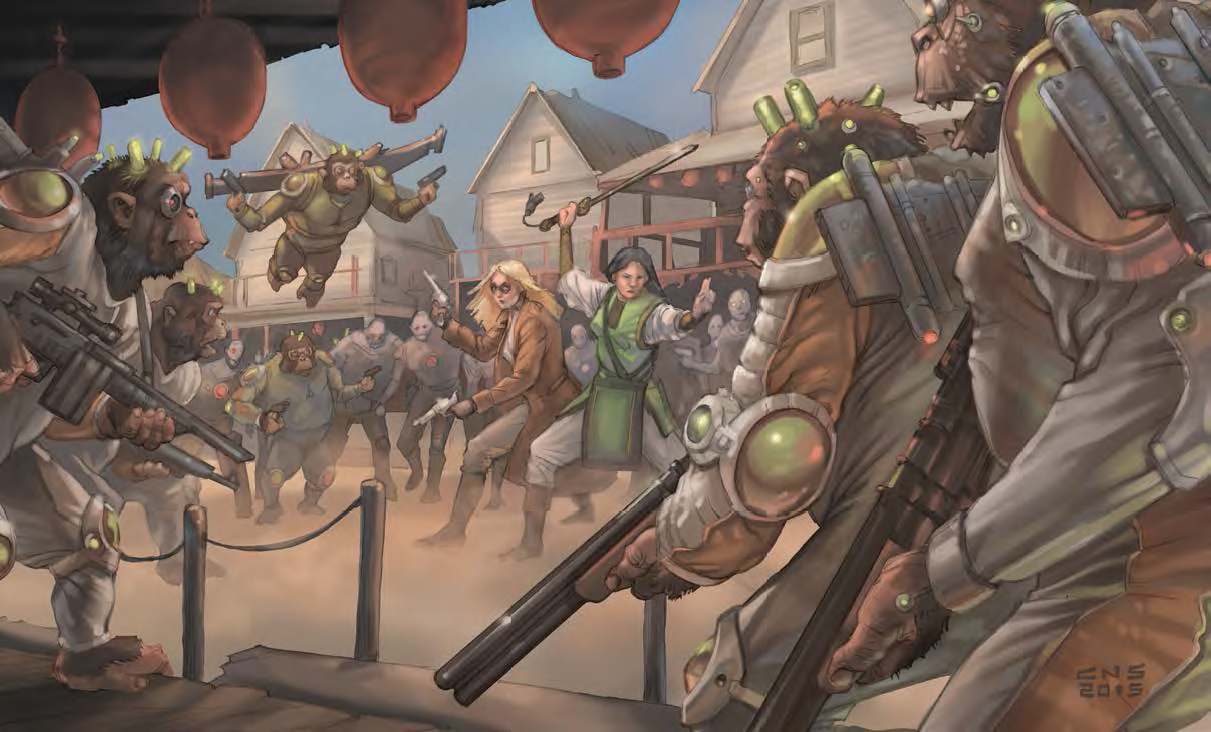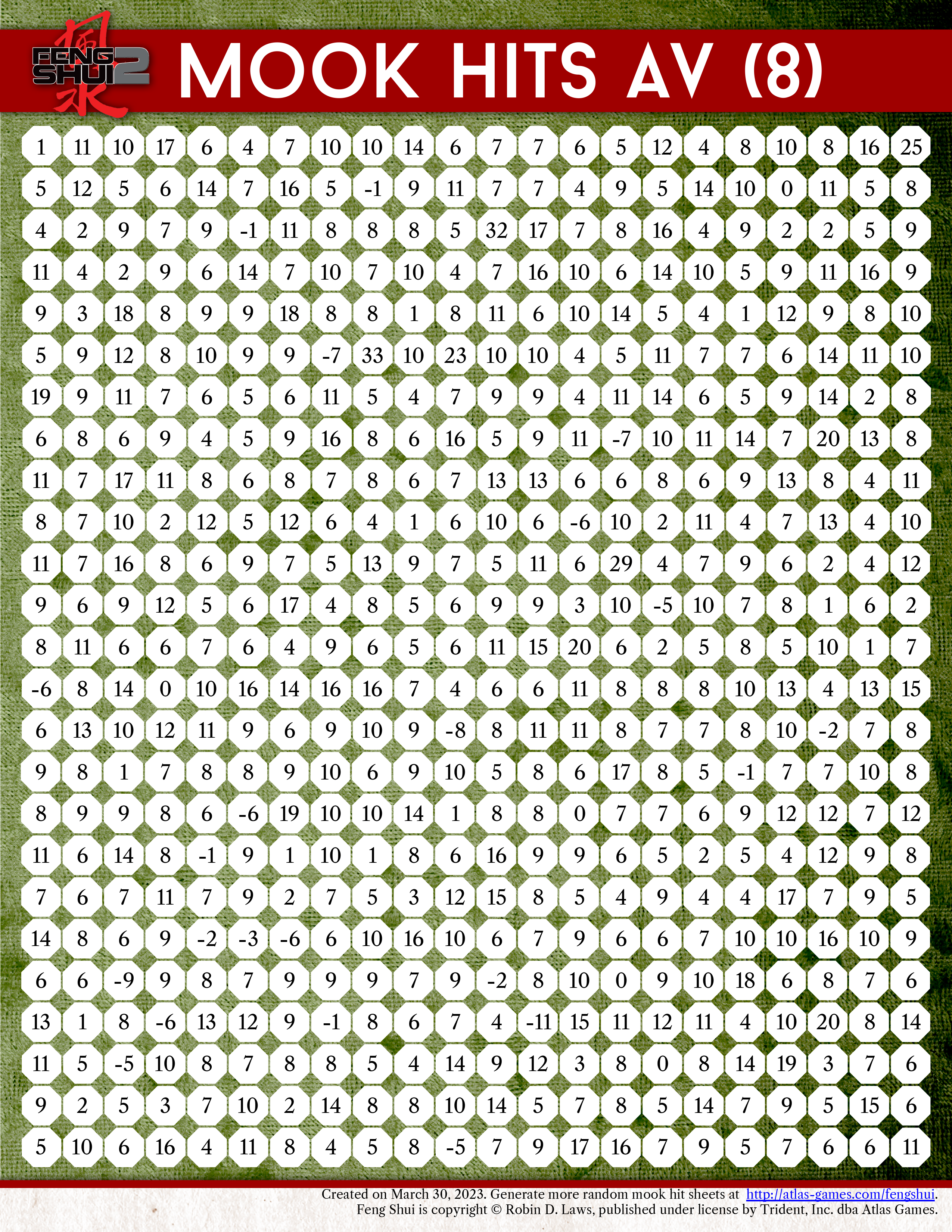
Go to Campaign Status Documents
If we’re talking about information that can be encoded in the campaign status document, then with trackers we’re getting pretty primal with it.
Literally any aspect of the campaign that you need to keep track of over the course of several sessions?
Put it on the campaign status document.
For example, I have a tendency to default to warm, sunny days in my description of the campaign world. To counteract that, I’ll use a random weather generator, pregenerate the results for several days, and then put them on my campaign status document:
WEATHER
10/20/790: Cloudy, high 43°F, low 31°F, light wind
10/21/790: Windy, high 50°F, low 40°F, moderate wind
10/22/790: Overcast, high 48°F, low 34°F, light wind
10/23/790: Fog, high 58°F, low 41°F, moderate wind
10/24/790: Clear, high 42°F, low 31°F, light wind
10/25/790: Windy, high 41°F, low 24°F, moderate wind
At the beginning of each session, I’ll take the current day’s weather, write it on a Post-it note, and put it on my GM screen to remind me.
For the In the Shadow of the Spire campaign, I used a simple reputation system. That actually goes on the first page of my campaign status document, since it may be referenced during almost any social interaction:
REPUTATION
FAME: 8
INFAMY: 0.5
FAME: Rescued Phon. Recovered Jasin’s body. Castle Shard party. Shilukar’s bounty. Association with Dominic. Tavan Zith riot. Killing of the Columned Row Killer. Freeing slaves and children from Temple of the Rat God. Paid repatriation costs for slaves from Porphyry House raid. Arrest ordered by Carrina.
Even more common than these permanent installations, for me, are bespoke trackers that get created as the result of the PCs’ actions.
For example, the PCs took one of their bags of holding and dedicated it corpses they want to talk to, either until they get speak with dead prepped or, after casting the spell the first time, until the one week time limit runs out and they can cast it again. (They call it their dead-icated bag.) Rather than scrambling through campaign journals and other notes trying to figure out the last time that they talked to, for example, Arveth, I simply added a tracker to my campaign status document indicating the last time they talked to one of their corpses:
SPEAK WITH DEAD ROSTER
Arveth: 10/19/790
Medusa: 10/18/790
Wulvera: 10/26/790
These bespoke trackers can also be more complicated. The same PCs looted twenty living paintings — paintings that are magically animated — while looting a dungeon. They ended up approaching the Winsome Gallery in the Nobles District to see if they would buy the paintings. I decided that the Winsome would buy some of them, but didn’t have enough cash on hand to buy all of them. Instead, they would put them on display and seek out buyers on the PCs behalf.
The PCs agreed to this.
Many sessions later, the PCs ended up looting Lithuin vases from a different adventure and the PCs once again decided to approach the Winsome Gallery. The result is this section of my campaign status document:
LIVING PAINTINGS / LITHUIN VASES
20 paintings total / 5 bought by Winsome Gallery
25% chance per day of selling 1d3 paintings
675gp per painting – 5400 gp on hand + 1000 gp from bidding war
Updated: 10/20/790
Winsome Owns: #13, #16, #17, #19, #20
On Display at Winsome: #19 – A figure pierced through by a great hook of iron, depending from the ceiling on a chain. Swaying gently back and forth.
Remaining Paintings: #7, #8, #9, #10, #11, #14, #18
10/2/790: sold #6,
10/3/790: Vladaams purchase #5
10/10/790: sold #3, #15 – House Dallimothan, bidding war with House Cath on #3 following Interlude 2
10/11/790: sold #1
10/14/790: sold #4, #12 – House Sadar
10/18/790: sold #2
WINSOME GALLERY
- Wylsaen Faechild, owner and expert (male elf, Expert 1)
- Nerr, a friendly art dealer (original arrangement for living portraits)
CHECKING IN
- Wylsaen has noticed that the eyes of painting #20 (depicting Alchestin) opened “about a week” after they purchased the painting. They had to take it off display because the eyes would follow those in the room unnervingly.
- Paintings proved quite notable after House Vladaam purchased one on the 5th: House Dallimothan, who purchased two of the paintings, was curious about their provenance and left a standing inquiry that the gallery is now passing along.
VASES OF LITHUIN (NOD5A, Area 7)
- Wylsaen unfamiliar with them, but Nerr identifies them correctly.
- Couldn’t dream of splitting the collection, but also can’t afford it for the gallery. Willing to pay 25,000 gp immediately and outright. Otherwise, they’ll try to find a buyer at the 40,000 asking price. (5% chance per day of a buyer presenting themselves)
Let’s break this down a bit.
(“Why bother with all this?” you may ask. First, the cashflow of the PCs is a significant element of the campaign at this point, having a major impact on the solutions they can pursue to various problems. Second, it results in some interesting roleplaying and opportunities for the PCs to make social connections.)
At the top of the section is the mini-system I created for randomly determining when the paintings sell. It starts with a quick summary of the initial conditions (there were 20 total paintings, 5 of which were purchased directly by the Winsome). Then, each day, I roll d% and see if any paintings sell. If they have, I roll 1d3 to see how many sold. After that, the prices the PCs agreed to with the Winsome are recorded, following by how much money the Winsome has one hand from previous sales (and will turn over to the PCs). Finally, I list the campaign date when I last checked sales (to make sure I don’t skip a day or accidentally check multiple times per day).
Following that is a roster of the paintings available for sale. For a full description of each piece, I would need to refer back to the original adventure, but I do list the full description of #19 specifically because the Winsome has it on display (and I will mention and describe it to the PCs when they come back).
Then a breakdown of which paintings sold when, this includes — as you can see — notes about particularly significant buyers (who might be of interest to the PCs or vice versa).
Following that are some Key Info entries for Wylsaen, their contact at the Winsome Gallery, that I can use while roleplaying him next time.
Finally, since the PCs have declared their intention to bring the Lithuin Vases here, I’ve put together some preliminary notes for how that interaction will go (which also includes a reference to where I can find the original description of the vases so that I can find it easily).
It turns out the PCs have been distracted by a lot of other stuff lately, so the vases have just been sitting in a bag of holding (not the dead-icated bag, that would be be gross) and these notes have been patiently waiting for several sessions.
Next: Continuity Notes


















